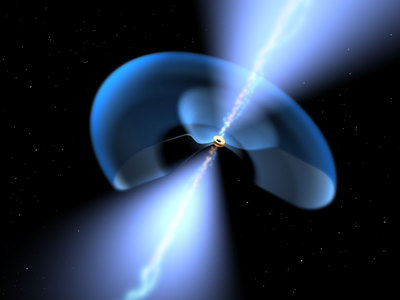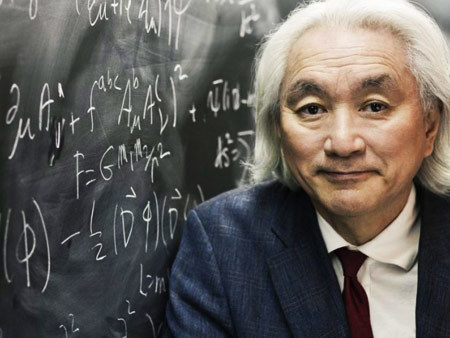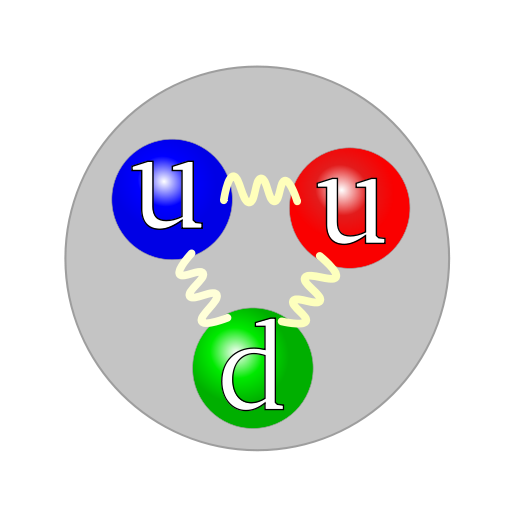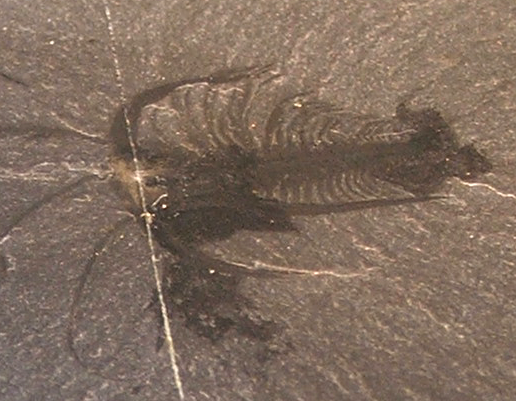Michael J. Behe's Blog, page 563
November 28, 2018
Evolutionary psychology: The cat among the pigeons!
Confession: Some of us never took evolutionary psychology (a discipline whose subject died a very long time ago but allegedly lives on in all of us) seriously enough to wonder if it could actually create controversies in psychology. Apparently so:
In terms of the political bias among social psychologists, Buss and von Hippel found that 95 per cent were mostly liberal and left-wing in their views (also, among the US respondents, only 4 had voted Republican in the prior Presidential election while 305 had voted Democrat).
Quizzing the social psychologists on their views of evolutionary theory, Buss and von Hippel found that they overwhelmingly accepted the principles of Darwinian evolution and also that it applied to humans, but when it came to whether evolutionary theory applies to human psychology and behaviour, the sample was split, with many social psychologists rejecting this notion.
Digging deeper into the survey results, there was no evidence that the social psychologists were averse to evolutionary psychology for religious reasons, but many did reject the idea that humans might be inherently violent (in certain situations) or that some people are widely considered more physically attractive than others due to universal evolved standards of attractiveness – perhaps, Buss and von Hippel suggested, this is because “they dislike the implications regarding the dark side of human nature.”Christian Jarrett, “Many social psychologists are impeded by their ideological aversion to evolutionary psychology” at British Psychological Society Research Digest
While Jarrett’s article doesn’t spell it out, the social psychologists don’t like evolutionary psychology because it is not rigidly progressive. It wasn’t likely to be so because it is a direct descendant of sociobiology, which is, in turn, a direct descendant of Social Darwinism.
Oh well. We’re surprised that the psychologists have time for this conflict, given all the Sokal hoaxes currently perpetrated on them. There was even an evo psych hoax called Gentlemen Prefer Blondes but you can read about it at the link.
Follow UD News at Twitter!
See also: The failed search for an evolutionary morality
Evolutionary psychology explains why men pay on the first date.
Richard Weikart on the anti-Semitic burst in evolutionary psychology
and
“The evolutionary psychologist knows why you vote — and shop, and tip at restaurants”
Copyright © 2018 Uncommon Descent . This Feed is for personal non-commercial use only. If you are not reading this material in your news aggregator, the site you are looking at is guilty of copyright infringement UNLESS EXPLICIT PERMISSION OTHERWISE HAS BEEN GIVEN. Please contact legal@uncommondescent.com so we can take legal action immediately.
Plugin by Taragana
We’re not even sure what dark matter IS

3-D impression of dark matter via Hubble
A helpful list of the 11 biggest questions about dark matter starts with this:
Originally, some scientists conjectured that the missing mass in the universe was made up of small faint stars and black holes, though detailed observations have not turned up nearly enough such objects to account for dark matter’s influence, as physicist Don Lincoln of the U.S. Department of Energy’s Fermilab previously wrote for Live Science. The current leading contender for dark matter’s mantle is a hypothetical particle called a Weakly Interacting Massive Particle, or WIMP, which would behave sort of like a neutron except would be between 10 and 100 times heavier than a proton, as Lincoln wrote. Yet, this conjecture has only led to more questions… Adam Mann, “The 11 Biggest Unanswered Questions About Dark Matter” at LiveScience
Follow UD News at Twitter!
See also: Discover: Even the best dark matter theories are crumbling
Researcher: The search for dark matter has become a “quagmire of confirmation bias” So many research areas in science today are hitting hard barriers that it is reasonable to think that we are missing something.
Physicists devise test to find out if dark matter really exists
Largest particle detector draws a blank on dark matter
What if dark matter just doesn’t stick to the rules?
A proposed dark matter solution makes gravity an illusion
and
Proposed dark matter solution: “Gravity is not a fundamental governance of our universe, but a reaction to the makeup of a given environment.”
Copyright © 2018 Uncommon Descent . This Feed is for personal non-commercial use only. If you are not reading this material in your news aggregator, the site you are looking at is guilty of copyright infringement UNLESS EXPLICIT PERMISSION OTHERWISE HAS BEEN GIVEN. Please contact legal@uncommondescent.com so we can take legal action immediately.
Plugin by Taragana
Two views on the new “Journal of Controversial Ideas”
Colleen Flaherty at Inside Higher Ed has the story:
Academic freedom is meant to protect scholars with controversial ideas. But a group of philosophers says academic freedom isn’t protection enough in an era of campus speech debates, internet trolls and threats against professors — and that academics now need a place to publish their most sensitive ideas pseudonymously.
That venue, The Journal of Controversial Ideas, will launch next year. Co-founder Peter Singer, Ira W. DeCamp Professor of Bioethics in the University Center for Human Values at Princeton University, and no stranger to controversial ideas, mentioned the idea for such a journal in a 2017 interview. But plans for it took shape in a BBC Radio 4 documentary on viewpoint diversity, which airs for the first time this week.
Jeff McMahan, White’s Professor of Moral Philosophy at University of Oxford, told the BBC that the need for more open discussion is “really very acute.” There’s “greater inhibition on university campuses about taking certain positions for fear of what will happen,” he said, with the political right and left alike stoking that “fear.” Threats to academic freedom and free speech from within the university tend to come the left, he added, while outside threats tend to come from the right. More.
Yeah. The outside barks but the inside bites. Many of us, if it’s our skin in the game, prefer the bark, however bad. Anyhow, two views are emerging:
Some think that the current system facilitates “responsible publishing”:
Defenders of The Journal of Controversial Ideas see it as a forum for true academic freedom. While academic freedom is important, it is not an unlimited right. Freedom without responsibility is recklessness. It is a lack of regard for the danger or consequences of one’s ideas. True academic freedom does not mean that writers get to choose when to avoid controversy. The pseudonymous authorship proposal allows authors to manipulate the credit and blame systems of the academy in the name of academic freedom.
When it is working well, academic inquiry is a conversation. Researchers make claims and counterclaims, exchange reasons, and work together to open up new fields of inquiry. A conversation needs speakers: we need to keep track of who is talking, what they have said before, and who they are talking to. Pseudonymous authorship is an opt-out from the conversation, and the academic community will be worse off if its members no longer want to engage in intellectual conversation.Haixin Dang and Joshua Habgood-Coote, “The Journal of Controversial Ideas: it’s academic freedom without responsibility, and that’s recklessness” at The Conversation
Then there’s the question of whether the current system even remotely resembles what Dang and Habgood-Coote describe. :From a response
There is so much shoddy research already in existence, that the fields of psychology and biomedical science are facing a reproducibility crisis. Putting the real authors’ names on these papers hasn’t prevented bad research from being published.
Additionally, just because a paper is pseudonymous does not necessarily mean that the papers will be of poor quality. Consider The Economist. Every article is published anonymously. Yet, the newspaper is highly trustworthy because the institution is concerned with maintaining its own credibility. Likewise, the editors of The Journal of Controversial Ideas likely will want to maintain a good reputation for their journal, which would incentivize them to publish responsibly.Alex Berezow, “The ‘Journal Of Controversial Ideas’ Is A Fantastic Idea” at American Council on Science and Health
The real question is the one that isn’t on the table: Why is the public supporting university faculties that seem to be one long-running Sokal hoax? If that’s based on the belief that a college education advances a person socially, the stats may be out of date: “the data show a recent meaningful decline in the differential between high school diploma holders and those with bachelor’s degrees. For males with high school diplomas, average earnings rose by $1,551 from 2015 to 2017; for bachelor degree holders, earnings actually fell by $367. For females, earnings rose $1,212 for those with high school diplomas, but only $312 for those with bachelor’s degrees. The payoff for having a college degree was falling.” (The Independent) More on this later, but that’s the conversation we really need to have. Not whether they’re responsible (to whom?) but whether they are even needed.
There’s also the question of whether people who are really upset by controversial ideas should even be at a university.;
Follow UD News at Twitter!
See also: Surprise: Science thrives when people can admit they didn’t prove something
and
What can a huge retractions database teach us? Overall, improved vigilance has slowed the trend, but key problems remain, including manipulated images. If a picture is worth a thousand words, that’s about three to five paragraphs of falsehood.
Copyright © 2018 Uncommon Descent . This Feed is for personal non-commercial use only. If you are not reading this material in your news aggregator, the site you are looking at is guilty of copyright infringement UNLESS EXPLICIT PERMISSION OTHERWISE HAS BEEN GIVEN. Please contact legal@uncommondescent.com so we can take legal action immediately.
Plugin by Taragana
November 27, 2018
Human consciousness may not be computable

Sir Roger Penrose(b. 1931)
Robert J. Marks looks at a recent theory:
One issue to be aware of is this: AI is performed by computers and computers are entirely algorithmic. That is to say, they are constrained to obey a set of operations written by a computer programmer. Mathematics is algorithmically constructed, based on logic and foundational axioms. And physics is built algorithmically on foundational laws. In this sense, common naturalistic phenomena are largely algorithmic. They operate according to the logic of mathematics and the laws of physics.
Penrose wondered, is anything in nature nonalgorithmic? He points to the collapse of a quantum mechanical wave function into a deterministic state. Such quantum effects can be found in the microtubules found in the brain. Penrose and Stuart Hameroff, M.D., propose4 a quantum mechanical model5 of consciousness involving the microtubules which, Hameroff notes, is “is in conflict with a major premise of [strong] AI and [Ray Kurzweil’s] Singularity.”6
Hameroff is referring to Google Director of Engineering Ray Kurzweil’s prediction that AI will be as intelligent as a human being by 2029 and that we will merge with AI by 2045 (that’s The Singularity). But computers are limited to executing algorithms and the theory that he and Penrose propose is non-algorithmic. More.
Follow UD News at Twitter!
See also: Also: by Robert Marks: Could Hal 9000 ever be built?
Screenwriters’ jobs are not threatened by AI Unless the public starts preferring mishmash to creativity
AI that can read minds? Deconstructing AI hype
and
Can the U.S. Air Force create thinking planes? Smart drones? They are working on general artificial intelligence (GAI) Eric Holloway: The likely way this will turn out is they’ll realize human-in-the-loop is unavoidable for any useful system, so it’ll spin off into something like the existing field of human computation.
Copyright © 2018 Uncommon Descent . This Feed is for personal non-commercial use only. If you are not reading this material in your news aggregator, the site you are looking at is guilty of copyright infringement UNLESS EXPLICIT PERMISSION OTHERWISE HAS BEEN GIVEN. Please contact legal@uncommondescent.com so we can take legal action immediately.
Plugin by Taragana
Do quasars provide evidence for free will?

artist’s cross-section of a quasar/ESA/NASA, the AVO project, Paolo Padovani
Possibly. They certainly rule out experimenter interference:
Quantum particles appear to behave randomly when measured. But what if there is no free will? In that case, the physicists were fated, so to speak, to set up the experiment to achieve a certain set of results which might appear to them to be random. But that was fated too.
Koberlein explains, “It’s often said that nothing can travel faster than the speed of light, but it’s really information that can’t travel faster than light. We can send each other telegrams or text messages, but never faster than the time it takes for light to travel between us. In a small lab, light has plenty of time to travel back and forth across the room while the experiment is being set up, so perhaps small bits of information bias the “random” aspect of experiment before it’s even done.”
That explanation might not seem very convincing if the random results appear time after time. But it would be a good thing to take the physicists out of the picture, so we can be surer. More.
Follow UD News at Twitter!
See also: Does Brain Stimulation Research Challenge Free Will? If we can be forced to want something, is the will still free? (Michael Egnor)
Is free will a dangerous myth? (Michael Egnor)
and
Is AI creating the conditions for Marxist revolution? An analyst looks at the conditions then and now
Last summer, we noted Karl Marx’s eerie AI prediction; he felt that capitalism would fall when machines replaced human labor. While today’s market economy doesn’t seem in a hurry to fulfill either prediction, some see artificial intelligence as enabling a comeback of his theories.
Copyright © 2018 Uncommon Descent . This Feed is for personal non-commercial use only. If you are not reading this material in your news aggregator, the site you are looking at is guilty of copyright infringement UNLESS EXPLICIT PERMISSION OTHERWISE HAS BEEN GIVEN. Please contact legal@uncommondescent.com so we can take legal action immediately.
Plugin by Taragana
Mechanosensing, God, and physicist Michio Kaku
Yes, they all end up being related and here’s how: Yesterday evening, gpuccio published “Mechanosensing and Mechanotransduction: how cells touch their world here,” on the extracellular matrix (ECM) by which a cell communicates with its environment.
A reader wrote,
Great ……. The only explanation that is scientific and logic is that all of this awesome activities are directed and guided by God , no other explanation is possible since the information needed to construct biostructures are not contained in nature or the cosmic laws.
and gpuccio replied:
Welcome to the discussion and thank you for your comment.
I just want to clarify that my argument about ID as applied to biology is about the design inference. It clearly infers design interventions by come conscious, intelligent and purposeful agent. From a purely scientific point of view, no statement about God is needed, at least IMO. That remains a philosophical or religious problem.
I absolutely agree that “the information needed to construct biostructures are not contained in nature or the cosmic laws.” That’s exactly why a design inference is absolutely needed to provide a credible explanation.
No law and no contingency can explain complex functional information. Conscious, intelligent and purposeful design can. That’s why the design inference is absolutely warranted when complex functional information is observed.
And, when it is observed in the huge amounts implied by the systems described in the OP, I can’t really imagine how any sensible person can deny the inference of design.
But, of course, they can and they will.
If the only reasonable inference about life is design, does design entail the adoption of a cosmology that includes a specific doctrine of God? gpuccio is surely right to say that the evidence of design, as such, cannot do that. Doctrines of God rely on other bases as well.
The evidence from design rules out some doctrines (naturalist atheism, for example) but does not thereby establish alternatives (Judaism, Buddhism, for example). Adherents to any serious version of these faiths accept design as a given but point to other factors to establish their specific claims.

Michio Kaku
Which brings us to theoretical physicist Michio Kaku. Recently, a friend asked whether he believed in God, based on the following from June 8, 2016:
Kaku, the Henry Semat Chair and Professorship in theoretical physics at the City College of New York, has published more than 70 articles in physics journals on topics such as supersymmetry, superstring theory, supergravity, and hadronic physics.
His latest claim is likely to make waves in the world of science.
“I have concluded that we are in a world made by rules created by an intelligence,” Kaku said, as quoted by the Geophilosophical Association of Anthropological and Cultural Studies. “To me it is clear that we exist in a plan which is governed by rules that were created, shaped by a universal intelligence and not by chance.” Jon Miltimore , Intellectual Takeout More.
Here’s Miltimore’s source:
Barbara Hollingsworth, “String Theory Co-Founder: Sub-Atomic Particles Are Evidence the Universe Was Created” at CNS
Here’s Hollingsworth’s source:
According to the physical, observing the behavior of these tachyons in several experiments, concluded that humans lived in a kind of “Matrix”, ie, a world governed by laws and principles conceived by a kind of great smart architect . “I have concluded that we are in a world made by rules created by an intelligence, not unlike a favorite computer game, but of course, more complex and unthinkable,” said the scientist.”Scientist Michio Kaku surprised with finding irrefutable evidence: God does exist” at NOVA Evolution May 20, 2015
Dr. Kaku clarified his comments in 2018:
“Science is based on what is testable, reproducible, and falsifiable,” Kaku says. “That’s called ‘science.’ However, there are certain things that are not testable, not reproducible, and not falsifiable. And that would include the existence of God.” He’s noted that discerning whether you live in a Matrix-style construct or not would be another such ‘non-falsifiable’ problem…
In any event, when asked about God, Kaku is likely to quote Einstein’s suggestion that there are two types of god: “One god is a personal god, the god that you pray to, the god that smites the Philistines, the god that walks on water. That’s the first god. But there’s another god, and that’s the god of Spinoza. That’s the god of beauty, harmony, simplicity.”
It’s that second “God” to which Kaku is drawn. He tells innovation tech today that the universe could have been random, but that instead “Our universe is rich; it is beautiful, elegant.” Robby Berman, “Michio Kaku believes in God, if not that God” at Big Think
He goes on to talk about the “exquisite simplicity” of the laws of physics as well.
So yes and no. Kaku believes in God as demonstrated by order and design as opposed to randomness and chaos. If that ever becomes a problem for him, science has even bigger difficulties than we have supposed.
What we can’t do is go from that to Buddha’s Fire Sermon or the Ten Commandments. These other sources assume the background of a universe that shows design but are answering different questions. Hope this clarifies matters.
Follow UD News at Twitter!
See also: Why AI won’t wipe out humanity? (Michiko Kaku)
and
Mechanosensing and Mechanotransduction: how cells touch their world
Copyright © 2018 Uncommon Descent . This Feed is for personal non-commercial use only. If you are not reading this material in your news aggregator, the site you are looking at is guilty of copyright infringement UNLESS EXPLICIT PERMISSION OTHERWISE HAS BEEN GIVEN. Please contact legal@uncommondescent.com so we can take legal action immediately.
Plugin by Taragana
Researcher shocked: Human mitochondrial DNA can be inherited from dads

Mouse connective tissue cells; nuclei are stained blue and mitochondria green/D. Burnette, J. Lippincott-Schwartz, NICHD
Seventeen individuals from three unrelated multi-generation families have shown the trait (a high level of mtDNA heteroplasmy, ranging from 24 to 76 percent):
A new study led by geneticist Taosheng Huang from the Cincinnati Children’s Hospital Medical Centre shows human mitochondrial DNA can be paternally inherited, in a landmark case that started with the treatment of a sick four-year-old boy.
The child, who was showing signs of fatigue, muscle pain, and other symptoms, was evaluated by doctors, and tested to see if he had a mitochondrial disorder.
When Huang ran the tests – and then ran them again to be sure – he couldn’t make sense of the results that came back.
“That’s impossible,” he told NOVA Next.
The reason Huang was so shocked was because the boy’s results showed a mix – called a heteroplasmy – in his mitochondrial DNA, which was made up of more then just maternal contributions.Peter Dockrill, “Radical Findings Show Mitochondrial DNA Can Be Inherited From Dads” at ScienceAlert
While there is evidence of this from animal studies, it was first detected in humans in this case, according to Peter Dockrill at ScienceAlert.
Here’s the story at NOVA Next:
Since putting together their initial findings, Huang and his team have already identified several more candidate families with mixed mitochondrial DNA. According to his preliminary estimates, this phenomenon may be present in as many as 1 in every 5,000 people. While Wang stresses that more research by other groups is needed to confirm these numbers, the work from Huang’s team indicates that paternal transmission of mitochondria may be far more widespread than researchers once thought.
So how has this been overlooked for so long? “Most people have taken for granted that mitochondrial inheritance is strictly maternal,” Breton explains. “But sequencing techniques are so much more powerful than they were even just a few years ago.” Katherine J. Wu, “Not Your Mom’s Genes: Mitochondrial DNA Can Come from Dad” at NOVA
Note: “So how has this been overlooked for so long? ‘Most people have taken for granted that mitochondrial inheritance is strictly maternal,’ Breton explains.” Translated from the Researcher-ese: There’ll be lots of surprises now that genetic sequences are routinely obtained by physicians.
Follow UD News at Twitter!
Hat tip: David Nguyen
See also: Rewrite the Textbooks (Again), Origin of Mitochondria Blown Up
and
Researchers: Mechanism may exist in all animals for filtering out mitochondrial DNA mutations
Copyright © 2018 Uncommon Descent . This Feed is for personal non-commercial use only. If you are not reading this material in your news aggregator, the site you are looking at is guilty of copyright infringement UNLESS EXPLICIT PERMISSION OTHERWISE HAS BEEN GIVEN. Please contact legal@uncommondescent.com so we can take legal action immediately.
Plugin by Taragana
Researchers: Proton mass mainly comes from sources other than quarks

proton showing quark structure/ Arpad Horvath
Proton: stable subatomic particle that has a positive charge equal in magnitude to a unit of electron charge and a rest mass of 1.67262 × 10−27 kg, which is 1,836 times the mass of an electron. (Britannica)
Only 9% of the proton’s mass comes from its quarks:
The rest of the proton’s mass comes from complicated effects occurring inside the particle, researchers report in the Nov. 23 Physical Review Letters.
…
Instead, most of the proton’s 938 million electron volts of mass is due to complexities of quantum chromodynamics, or QCD, the theory which accounts for the churning of particles within the proton. Emily Conover, “Physicists finally calculated where the proton’s mass comes from” at Science News
These results provide figures for what’s long been suspected.
Seems like it’s a quantum world after all.
Follow UD News at Twitter!
See also: Proton decay findings provide less support now for grand unification theory (GUT) for universe
and
Particle physicist: Science is suffering from “baked in” bias (features Sabine Hossenfelder post)
Copyright © 2018 Uncommon Descent . This Feed is for personal non-commercial use only. If you are not reading this material in your news aggregator, the site you are looking at is guilty of copyright infringement UNLESS EXPLICIT PERMISSION OTHERWISE HAS BEEN GIVEN. Please contact legal@uncommondescent.com so we can take legal action immediately.
Plugin by Taragana
November 26, 2018
Broadway play features the hard problem of consciousness

Tom Stoppard/Alexander Kondrashkin
In a move reminiscent of Tom Wolfe tackling The Kingdom of Speech near the end of his life, Tom Stoppard (b. 1937) decided to tackle consciousness:
Consciousness is a hard problem for science, principally because no one quite understands what makes us the subjects of our experiences.
According to one critic, the problem that has preoccupied Stoppard throughout his career is “Are the materialists right, or is there more to man than mere flesh?”:
Hilary (Adelaide Clemens), the protagonist, is a youthful research psychologist-in-the-making who longs above all things to crack the hardest problem in to her field, the conundrum of human consciousness: “Who’s the you outside your brain? Where? The mind is extra….We’re dealing in mind-stuff that doesn’t show up in a [brain] scan—accountability, duty, free will, language, all the stuff that makes behavior unpredictable.” For her, a computer that plays chess can be conscious only if it “minds losing,” and the problem of consciousness is directly related to the problem of morality: … More. “Tom Stoppard’s new play tackles consciousness itself” at Mind Matters
Follow UD News at Twitter!
See also: Panpsychism: You Are Conscious but So Is Your Coffee Mug. Materialists have a solution to the problem of consciousness, and it may startle you
A short argument against the materialist account of the mind (Jay Richards)
and
What great physicists have said about immateriality and consciousness
Copyright © 2018 Uncommon Descent . This Feed is for personal non-commercial use only. If you are not reading this material in your news aggregator, the site you are looking at is guilty of copyright infringement UNLESS EXPLICIT PERMISSION OTHERWISE HAS BEEN GIVEN. Please contact legal@uncommondescent.com so we can take legal action immediately.
Plugin by Taragana
Bringing the Cambrian mysteries to life

Marrella, a Burgess Shale Cambrian fossil/Verisimilus (CC-BY-2.5)
Okay, okay, not bringing them to “life” but giving us a much better sense of life over half a billion years ago.
The Canadian Rockies have, it turns out, many more Cambrian sites than the big 1909 find that lay neglected at the Smithsonian so long:
Each new stop has offered striking views of unfamiliar animals, many already described in high-profile papers: the little fish relative Metaspriggina, a vertebrate ancestor that Caron now speculates clustered in schools; the pincered Tokummia; and the ice cream cone–shaped fossils called hyoliths, which Caron’s Ph.D. student Joseph Moysiuk last year linked to shelled animals called brachiopods, some of which persist today.
New finds in various parts of the world generate new interpretations:
In fossils of the shrimplike Chengjiangocaris kunmingensis from southwest China, for example, “we have this structure that looks almost like a pearl necklace,” running almost head to tail, says Javier Ortega-Hernández, an incoming professor at Harvard. His team, led by Jie Yang at Yunnan University in Kunming, China, argued in 2016 that the necklace is a nerve cord studded with smaller clusters of neurons, themselves sprouting tiny nerve fibers. Living arthropods no longer have those fibers. But today’s velvet worms and priapulid worms do, implying kinship between long-vanished stem arthropods and those groups.
Critics argue that paleontologists such as Ma and Ortega-Hernández overinterpret some fossils, spotting nervous tissues that aren’t there. Many of those structures, the critics say, might just be “halos,” biofilms formed when microbes broke down internal parts like muscles or guts after death. But other researchers are convinced. “If you look at the best-preserved nervous systems, there’s no doubt” that the features are real, says Graham Budd, a paleontologist at Uppsala University in Sweden and an architect of the current stem-and-crown concept. Joshua Sokol, “Cracking the Cambrian” at Science
The Cambrian explosion is mysterious enough that it gets more interesting as we know more about it. Incidentally, we tend to assume that the life forms that did not persist for long or survive the era were failures. But it’s possible they were solving problems that changed or disappeared, so they died along with the problems.
Follow UD News at Twitter!
See also: Researchers: Extreme fluctuations in oxygen levels, not gradual rise, sparked Cambrian explosion
Maverick theory: Cambrian animals remade the environment by generating oxygen
Did a low oxygen level delay complex life on Earth?
There was only a small oxygen jump
Animals didn’t “arise” from oxygenation, they created it, researchers say
Theory on how animals evolved challenged: Some need almost no oxygen
New study: Oxygenic photosynthesis goes back three billion years
Enough O2 long before animals?
Life exploded after slow O2 rise?
So the Cambrian really WAS an explosion then?
and finally,
Researchers: Cambrian explosion was not an explosion after all (When in doubt, insist that nothing happened.)
Also, Steve Meyer’s Darwin’s Doubt
Copyright © 2018 Uncommon Descent . This Feed is for personal non-commercial use only. If you are not reading this material in your news aggregator, the site you are looking at is guilty of copyright infringement UNLESS EXPLICIT PERMISSION OTHERWISE HAS BEEN GIVEN. Please contact legal@uncommondescent.com so we can take legal action immediately.
Plugin by Taragana
Michael J. Behe's Blog
- Michael J. Behe's profile
- 219 followers



